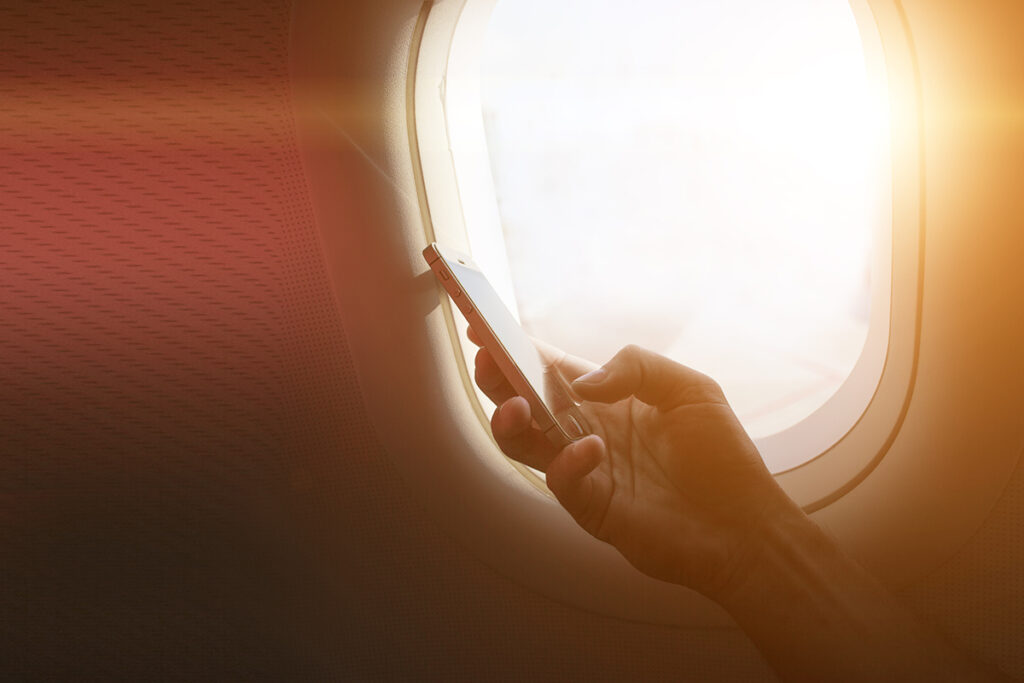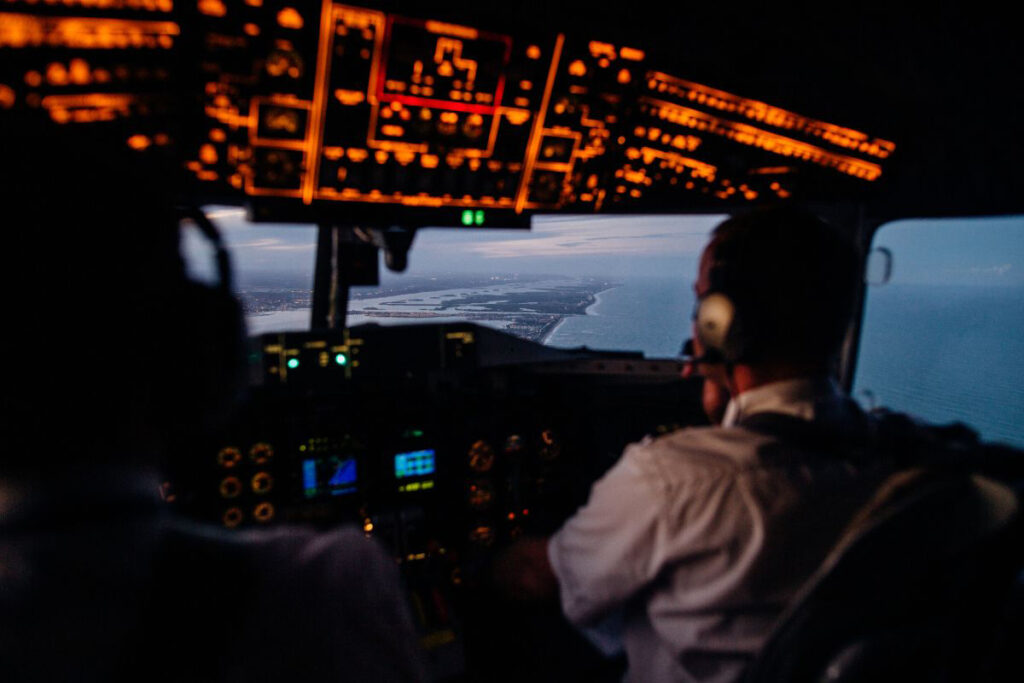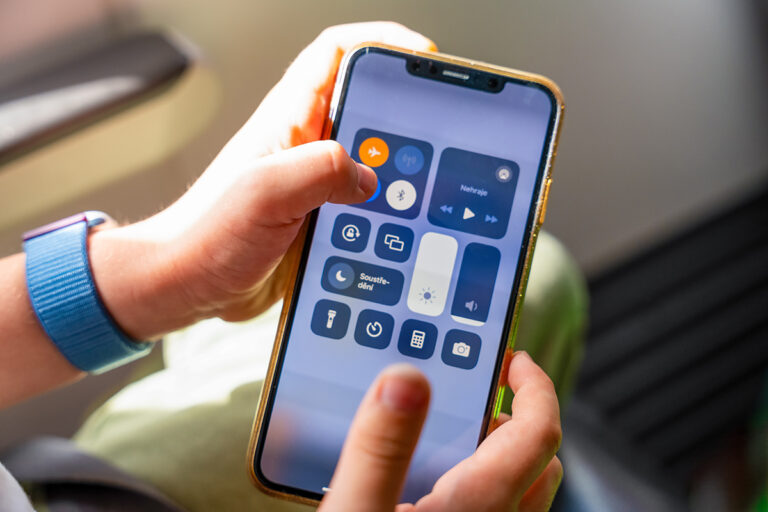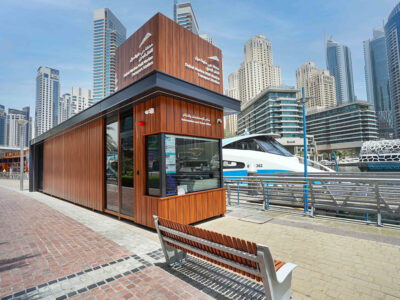Your phone buzzes with notifications as you settle into your seat, then comes the familiar announcement: “Please ensure all electronic devices are switched to airplane mode.”
But as airlines from the world over roll out 5G services that let passengers make calls mid-flight, the question really is – does this decades-old ritual still makes sense?
And, what is airplane mode really about?
How airplane mode began
The introduction of airplane mode in mobile devices was driven by aviation safety regulations introduced in the late 1990s and early 2000s.
As mobile phone usage became more widespread, regulators raised concerns that radio signals from these devices could interfere with aircraft navigation and communication systems. While conclusive evidence of such interference was limited, aviation authorities adopted a cautious approach.
To comply with these regulations, mobile manufacturers began integrating a setting that would disable a device’s ability to send or receive wireless signals.
The feature, known as airplane mode or flight mode, was designed to switch off cellular, Wi-Fi and Bluetooth connections without powering down the device entirely. Nokia was among the first companies to introduce this feature on its Symbian-based phones in the early 2000s.
Airplane mode soon became standard across smartphones, tablets and laptops, allowing passengers to use their devices offline during flights.
As aircraft systems evolved and some airlines began offering in-flight Wi-Fi and Bluetooth services, regulators allowed passengers to selectively enable certain wireless functions while maintaining compliance with safety protocols.
Today, the use of airplane mode remains mandated by most aviation authorities, particularly during take-off and landing, although global standards continue to evolve as aircraft technology and passenger connectivity demands increase.

But does this really affect flight operations?
Gabriel Melikian, an aviation specialist and UAE industry veteran, said he “never came across an incident that a mobile phone brought an aircraft down, or indeed, had an emergency landing because of interference with flight controls.”
The revelation comes as global airlines introduce 5G technology onboard aircraft, allowing passengers to make calls and use data services without switching to airplane mode—contradicting decades of safety protocols.
While, airplane mode was created to prevent electronic devices from interfering with aircraft navigation and communication systems, Melikian suggests the feature should have been called ‘Standby Mode’ instead, because “the emitted signals can also interfere with hospital equipment, office computers, and many diagnostics equipment which are susceptible to radio waves signals, not just aircrafts.”
The primary concern centres on radio signals from mobile phones creating buzzing sounds in flight crew headsets.
“Radio signals emitted by mobile phones within an aircraft can be disturbing/annoying to say the least; as they sometimes can be heard over the headset of the flight crew, in the form of high pitch intermittent buzzing sound,” Melikian explained.
As an example, he warned that if over 100 passengers having phones switched on simultaneously, “the flight crew will just be overwhelmed by buzzing sounds on their headsets” during critical phases like takeoff and landing.
Despite regulatory restrictions by the Federal Aviation Administration (FAA) and Federal Communications Commission (FCC), there remains “NO scientific proof” that mobile devices actually cause interference with aircraft control or navigation systems, according to Melikian.
Echoing the sentiment, Saj Ahmad, an aerospace and aviation analyst from the UK, confirmed that “there’s never been a known incident of a phone interfering with a flight,” yet airlines continue mandating flight mode to prevent phones emitting radio frequency signals.
However, older aircraft remain more susceptible to interference. Melikian noted that from his experience, “older navigation systems such as (ADF/HSI) Automatic Direction Finder and Horizontal Situation Indicator, while on the ground experienced some anomalies.”
He explained that “many older airplanes and the bulk of the general aviation fleet are still flying around with ADF/HIS navigation systems,” though this does not apply to modern aircraft used by airlines, which rely on satellite navigation and electromagnetically shielded instruments.

In addition, European Union and UK regulations have shifted significantly with 5G technology implementation, Melikian said.
Airlines can now provide 5G services onboard, with the deadline for member states to make 5G frequency bands available for aircraft set at June 30, 2023.
The changes allow passengers to make calls, send texts, stream videos, and access applications during flights without airplane mode.
However, Melikian described current guidance as “very inconsistent and confusing” because airplane mode remains recommended for safety reasons despite the technological advances.
Mobile phones struggle to maintain connections during flight due to the speed of aircraft and physical barriers.
“A fast-moving aircraft can confuse the ground-based cellular telephone network, as a phone in flight will keep searching for a signal, and won’t be able to receive any signal due to lose line of sight of the signal, plus the metal construction of the aircraft hull prevents signal going through,” Melikian said.
Phones become “inoperative” once aircraft climb above 3,000 feet in most cases.
So, what is the role of Wi-Fi and cellular networks in aircraft?
Wi-Fi and cellular networks operate as separate technologies using different approaches to connect devices. Ahmad explained that “Wi-Fi is used for more short-range connections like in an office, whereas cellular relies on connectivity to cell towers for signals and communications.”
Airplane mode suspends radio frequency, Bluetooth, and Wi-Fi capabilities across all systems. In addition, Ahmad noted that given advancements in both aircraft systems and mobile technology, “while both can co-exist, it makes sense to keep the rules in place to de-risk the possibility of operational hindrance to pilots and their airplane.”
Melikian particularly highlighted lithium battery risks as more significant than interference concerns, calling it “the most dangerous item on your carry-on luggage is the Lithium battery in the phone.”
“Lithium batteries are a component of many items in our daily lives. Your mobile phone, your laptop, table or even cameras are powered by rechargeable lithium batteries. When damaged, short-circuited or overheated, these batteries can catch fire,” he said.
Regulatory bodies ICAO and IATA require portable electronic devices to be carried in hand baggage rather than checked luggage because damaged or overheated lithium batteries can catch fire, Melikian said.
Spare batteries and power banks are limited to two per person and must be individually protected against short-circuits.

“They should not be recharged while on board the aircraft,” Melikian warned, noting he personally has observed passengers charging devices with battery banks and seat sockets, which “should not be permitted as batteries do heat up when getting charged, or worse.”
Historical context reveals commercial motivations behind phone restrictions. Melikian recalled that when mobile phones became popular in the late 1980s and early 1990s, “you were not allowed to use them on-board, which was at the same time the airlines started introducing on-board telephones by each armrest; just swipe the credit card, dial and talk, which was good revenue.”
He further explained that if mobile phones truly posed flight safety risks, “no mobiles will be allowed on board, period” and questioned whether “the airline, pilots and cabin crew would hardly rely on passengers to activate the airplane mode if the consequences are that the phone might interfere with the flight controls and navigation systems of the aircraft.”
Ahmad identified passenger comfort as a non-safety reason for maintaining phone restrictions, noting that “the last thing many want to be subject to is fellow passengers have loud, full-blown or lengthy conversations.”
He highlighted the growing trend of digitally detoxing on flights, where passengers engage with no entertainment or devices. Despite questioning the necessity of airplane mode, both experts recommend compliance with current regulations.
“The industry always tries to shield itself from “uncertainty” so when there is no conclusive evidence based on scientific or crash investigations then they keep the rule in place for ”just in case,” Melikian said.
He also explained that while the risk of interference is relatively low, “the cumulative effect” of many devices transmitting signals could increase the chances of disrupting critical aircraft systems, especially during take-off and landing.
“Regulatory bodies like the Civil Aviation Authority continue to mandate airplane mode as a safety precaution, despite advancements in technology, again, playing it safe rather than be sorry,” Melikian said, suggesting that it is better for passengers “switch the mobile phone off and save the battery” rather than using airplane mode.
He also warned that phones left on without airplane mode activation result in “drained battery at the end of the journey, as the phone will be working overtime searching for communication signal.”
“As with any topic, there will be pros and cons – it’s a rather broadly accepted facet of travel that flight mode is something we all do (or should do!), similar to how we comply with security checks before boarding. While there will never be consensus for either argument, the status quo as it is today infers that compliance with airline and cabin crew directives means that there is unlikely to be any wholesale changes to current practices,” Ahmad concluded.








